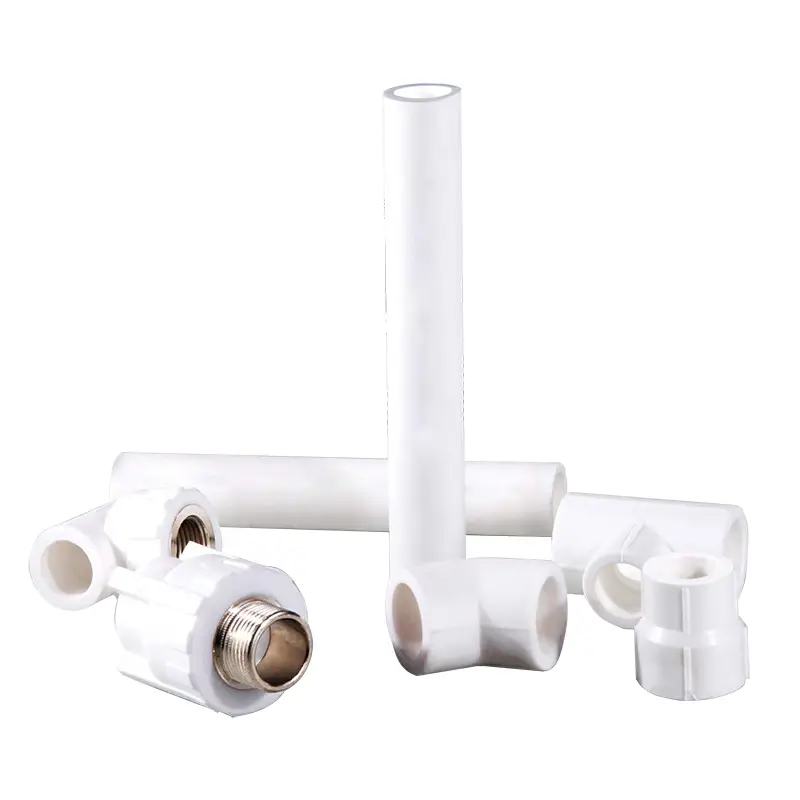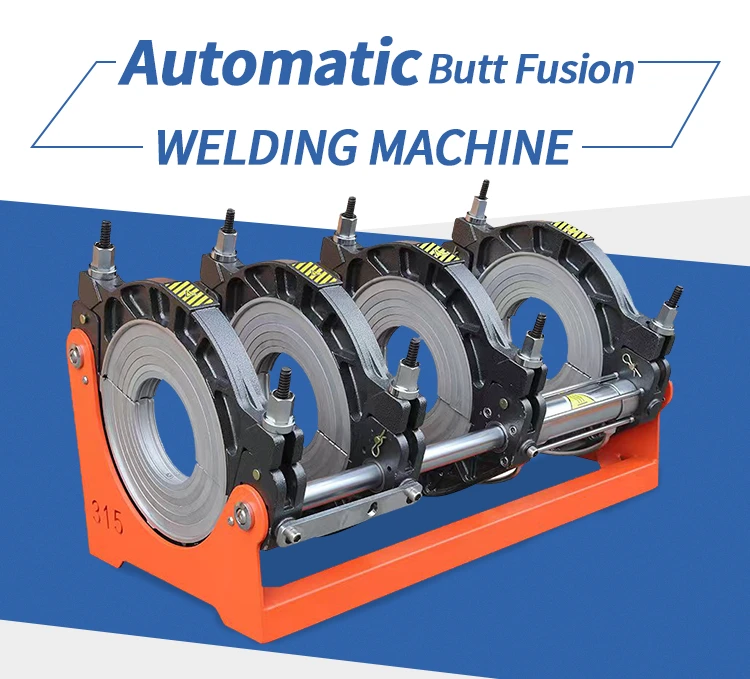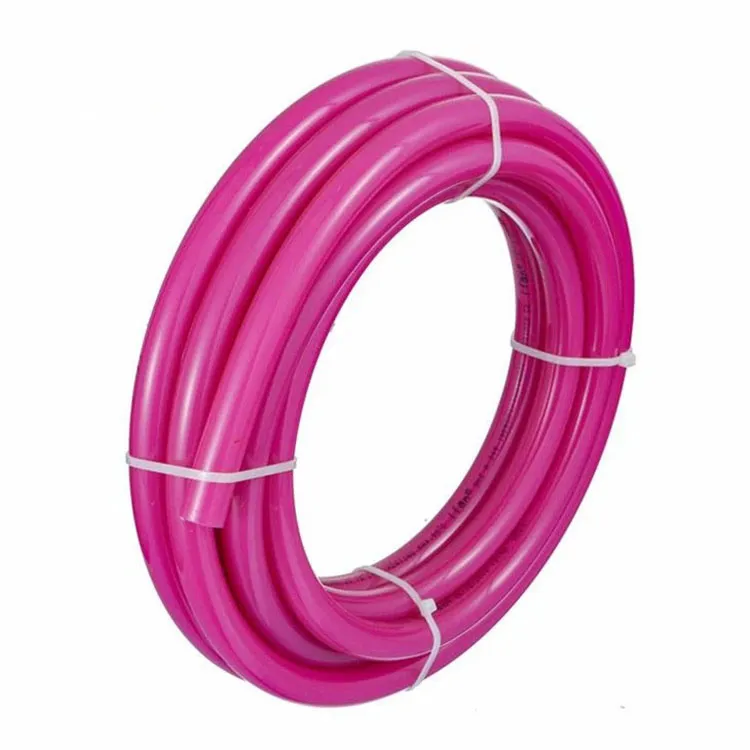Aluminum alloy lined plastic pipe structure
Aluminum alloy lined plastic composite pipe: The outer layer is an aluminum alloy pipe, and the inner layer is a thermoplastic plastic pipe, which is a double-layer composite pipe formed by prestressing. The outer aluminum alloy pipe is a seamless aluminum pipe formed by heating and extruding 6063 deformed aluminum, and then anodized (the anodized coating on the aluminum pipe reaches more than 10mu and meets the standard), and the inner plastic pipe is a thermoplastic plastic (PPR, PERT, PB, PE).
Three core technologies
1. Prestressed composite technology
The physical prestressed technology used in aluminum alloy lined plastic (ppr pert pb) composite pipe effectively and optimally combines two materials with different elongation (aluminum alloy metal pipe and thermoplastic plastic pipe) through prestressed composite technology, while not changing the physical properties of the two materials, effectively solving the compatibility and sealing of different materials of plastic pipe and aluminum alloy pipe in composite application; the composite pipe formed after prestressed composite obtains the best interlayer bonding strength at the joint surface of the two materials through reasonable parameter design, so that the entire composite pipe shows consistency in cold shrinkage and thermal expansion, and the linear expansion coefficient of the aluminum alloy lined plastic composite pipe is only about 1/5 of that of pure plastic pipe. In terms of stiffness and strength, the aluminum alloy lined plastic composite pipe has better performance than a single material (aluminum alloy pipe or plastic pipe).
2. Anodizing technology
If the outer aluminum tube of the aluminum alloy lined plastic (ppr pert pb) composite pipe is not anodized, it will cause serious corrosion. Therefore, it is necessary to fundamentally solve the anti-corrosion problem to improve the protection, decoration and practical functionality. Electrochemical treatment (anodizing process) is currently the most widely used and successful technology for aluminum anodizing in China. Anodizing on the surface of the aluminum alloy tube forms a relatively dense oxide film (aluminum oxide) with an average film thickness of more than 10μm. There are still certain gaps in the surface layer of the oxidation belly of this process. Therefore, it is necessary to further use the sealing technology to effectively repair and bridge the gaps between the oxide film to achieve the best and perfect adhesion of the oxide film layer on the surface of the aluminum tube.
Scope of application
Aluminum alloy lined plastic pipes are mainly suitable for building hot and cold water, including industry, gas transmission, civil hot and cold water, direct drinking water, central air conditioning and heating systems.
| Applications | Engineering and Construction | Pipe network system Main pipe system Riser pipe system Branch pipe system |
| Gas Company | Town gas transmission pipeline system | |
| High-end hotels | Cold and hot water supply pipe system | |
| Hotel Hospital | Pure water, direct drinking water pipeline system | |
| High-rise buildings | Central air conditioning piping system | |
| Biochemical Engineering | Purified water and preparation delivery pipeline system | |
| Industrial Manufacturing | Special liquid and compressed gas transmission pipeline system | |
| Medical food | Biological liquid and chemical medium transportation pipeline syst em |
Aluminum alloy lined plastic composite pipe
●Aluminum alloy lined plastic composite pipe has good energy-saving performance
The production energy consumption of the pipe is only 20% of that of the steel pipe, and the thermal conductivity is very low. It can greatly reduce the heat loss when applied to the hot water system.
●It has good corrosion resistance, no scaling, safe and non-toxic
The use of aluminum alloy lined plastic composite pipe will not cause water pollution caused by scaling and rust on the inner wall. There is no chemical dilution, which complies with my country's health regulations and is more suitable for the transportation of drinking water.
●Aluminum alloy lined plastic has good heat resistance and pressure resistance
The short-term use temperature of the pipe can reach 95℃, with high compressive strength and long service life.
●Aluminum alloy lined plastic pipe is light and high-strength, and has low fluid resistance
The density of the pipe is 1/8 of that of the metal pipe, and it has good toughness and impact resistance.
●High temperature creep resistance, most suitable for high temperature heating system application.
●Small linear expansion coefficient, no deformation when using hot water, beautiful appearance when installed.
●High thermal deformation temperature and long service life.
●The pipe and the pipe fittings are hot-melt connected and will never leak.
●Pipe fittings
① The outer aluminum alloy of aluminum alloy lined plastic PPR pipe is gray or white, and the inner polypropylene is generally white. Curved elastic double hot melt pipe fittings are black or white.
② The outer aluminum alloy of aluminum alloy lined plastic PERT pipe is gray or white, and the inner polypropylene is generally white. Curved elastic double hot melt pipe fittings are gray or white.
③ The outer aluminum alloy of aluminum alloy lined plastic PPR pipe is gray, and the inner polypropylene is generally white. Curved elastic double hot melt pipe fittings are gray.
④ Ordinary PPR and PERT pipe fittings are white.
Curved elastic vector double fusion pipe fittings
464732.webp)
Construction and installation of aluminum alloy lined plastic composite pipes
1. General regulations
1.1 Before the installation and construction of the pipeline, the following conditions should be met;
1.2 The construction drawings and their technical documents are complete, and the technical disclosure of the drawings has been carried out to meet the construction requirements;
1.3 The construction plan, construction technology, materials, mechanical equipment supply, etc. can ensure normal construction;
1.4 Construction personnel should undergo technical training on the installation of aluminum alloy lined plastic pipes for hot and cold water in buildings.
2. Transportation and storage
2.1 Pipes and pipe fittings should be handled with care during transportation, loading and unloading, and handling to avoid oil corrosion. Severe impact is strictly prohibited, and they must not touch sharp objects, and must not be thrown, rolled, or dragged.
2.2 There should be a material storage warehouse at the construction site, and it must not be stored in the open air.
2.3 The warehouse for storing pipes and pipe fittings should have good ventilation conditions and be away from heat sources and pollution sources such as oil and chemicals.
2.4 Pipes should be stacked horizontally on a flat ground (board surface), bending of the pipes should be avoided, and block or strip supports should not be used. The stacking height should not exceed 1.0m. Pipe fittings should be stacked layer by layer and should not be stacked too high.
3. Pipeline installation
3.1 Pipeline system connection components
1) Connection between pipes and pipe fittings (such as straight joints, elbows, tees, etc.)
2) Connection between pipe fittings with external threads and standard market threaded parts (such as stop valves,
ball valves, kitchen and sanitary ware metal hoses, radiator joints, etc.)
3) Connection between pipe fittings with internal threads and standard market external threads
401652.webp)
3.2 Pipeline Installation Procedure
| Table 1 Aluminum alloy lined plastic pipe peeling length | Unit: mm | ||
| Nominal outside diameter dn | Peeling length | Nominal outside diameter dn | Peeling length |
| 20 | 13 | 63 | 25 |
| 25 | 15 | 75 | 28 |
| 32 | 17 | 90 | 32 |
| 40 | 19 | 110 | 38 |
| 50 | 22 | 125 | 45 |
| 160 | 55 | 200 | 60 |
1) When connecting, guide the pipe end into the heating sleeve without rotation and insert it into the peeling place of the aluminum alloy pipe fracture. At the same time, push the pipe fitting onto the heating head without rotation to reach the specified hot melt depth.
2) After the heating time is reached, immediately remove the pipe and pipe fitting from the heating head at the same time, quickly insert them directly into the pipe fitting without rotation, stabilize for a few minutes, so that a uniform flange is formed at the joint.
3) Within the specified processing time, the joint that has just been hot-melted can still be corrected, but rotation is strictly prohibited.
4) Hot melt control temperature PB: 260℃ ±10℃; PE-RT: 240℃ ±10℃; PPR: 260℃ ±10℃. (Adjust according to the actual ambient temperature)
3.3 Support and hanger installation
1) When installing the pipeline, the pipe clamp must be set according to different pipe diameters and requirements. The position of the hanging clamp or metal saddle clamp should be relatively accurate, and the burial should be flat. The pipe clamp should be in close contact with the pipeline, but it should be loose in places where thermal compensation is required to allow the pipeline to slide and expand due to heat.
2) Reliable fixing measures must be taken at each water distribution point and stress point of the aluminum alloy lined plastic pipe.
3) When using angle pipe clamps and U-bolts for fixing, rubber pads should be installed between the pipe clamps and the pipes.
4) The spacing between the riser and the cross bracket shall not be greater than the provisions of Table 2:
| Table 2 Maximum spacing between cold and hot water pipe supports and hangers | Unit: mm | ||||||||
| Nominal outside diameter dn | 20 | 25 | 32 | 40 | 50 | 63 | 75 | 90 | 110 |
| Cross tube | 1500 | 1700 | 2000 | 2200 | 2300 | 2500 | 2500 | 3000 | 3000 |
| Riser | 1800 | 2000 | 2200 | 2500 | 2500 | 2500 | 2600 | 3000 | 3500 |
3.4 Thermal compensation of pipeline system
1) Considering the influence of the environment and the temperature change of the medium in the pipe, the pipe will produce cold and hot expansion and contraction. The branch pipe section should be equipped with compensating expansion joints at a certain distance. The pipe support should use sliding support and apply yellow grease on the sliding part.
2) For L-type pipe compensation without fixed support, the maximum length of the straight pipe shall not exceed 3m, and the minimum free arm length can be adopted according to Table 3.
| Table 3 Minimum free arm length of L-type pipe | Unit: mm | ||||||||
| Nominal outside diameter dn | 20 | 25 | 32 | 40 | 50 | 63 | 75 | 90 | 110 |
| Cross tube | 208 | 233 | 263 | 294 | 329 | 369 | 403 | 441 | 488 |
| Riser | 126 | 141 | 160 | 179 | 200 | 224 | 245 | 268 | 296 |
Note: The free arm length of the hot water pipe in the table is calculated based on the temperature difference inside the pipe of 70℃, the cold water pipe is 20℃, the air temperature difference outside the pipe is 60℃, and the linear expansion coefficient is 0.035mm/m.k.
3) Thermal compensation can also be performed by installing the door-type tube in a horizontal or vertical position.
867879.webp)
Key points for hot-melt connection of aluminum alloy lined plastic pipes
Operation steps
1. Be familiar with the operation procedures of special hot-melt tools, the structural characteristics of aluminum alloy lined plastic composite pipes and special curved elastic double-melt pipe fittings with socket depth marking settings.
2. According to the socket orientation markings set on the surface of the special curved elastic double-melt pipe fittings of different specifications, the tool pen can accurately mark the fusion length orientation line on the surface of the pipe, and mark the socket depth orientation green at the same time.
3. Use a metal pipe cutter and auxiliary tools (such as saw bows and pliers) to peel off the outer pipe (aluminum alloy pipe) according to the fusion length orientation line, and then use special hot-melt tools to heat the pipes and fittings, and socket-melt them to the socket depth orientation line. As shown in the figure below.
277875.webp)
Notes
1. When the cutter cuts the aluminum tube in a circular manner, it should not be cut too deep to damage the inner plastic tube
2. When the cutter cuts the aluminum tube longitudinally, it should not be cut too long to cause the inner plastic tube to be too much outside, resulting in weak pressure bearing capacity of this part
287.webp)
316.webp)
241.webp)
794.webp)

328.webp)
294.webp)
274.webp)




476.webp)


